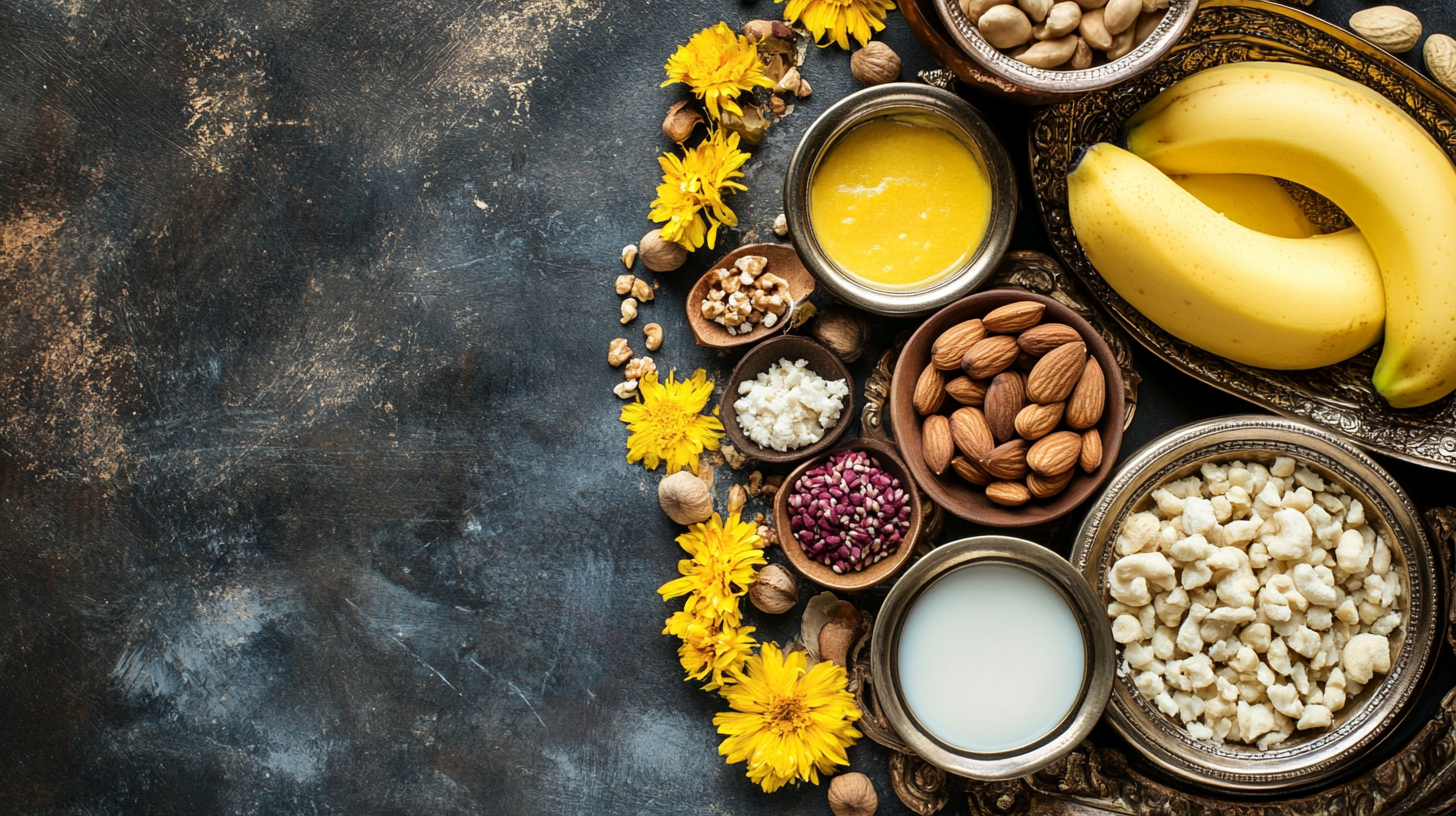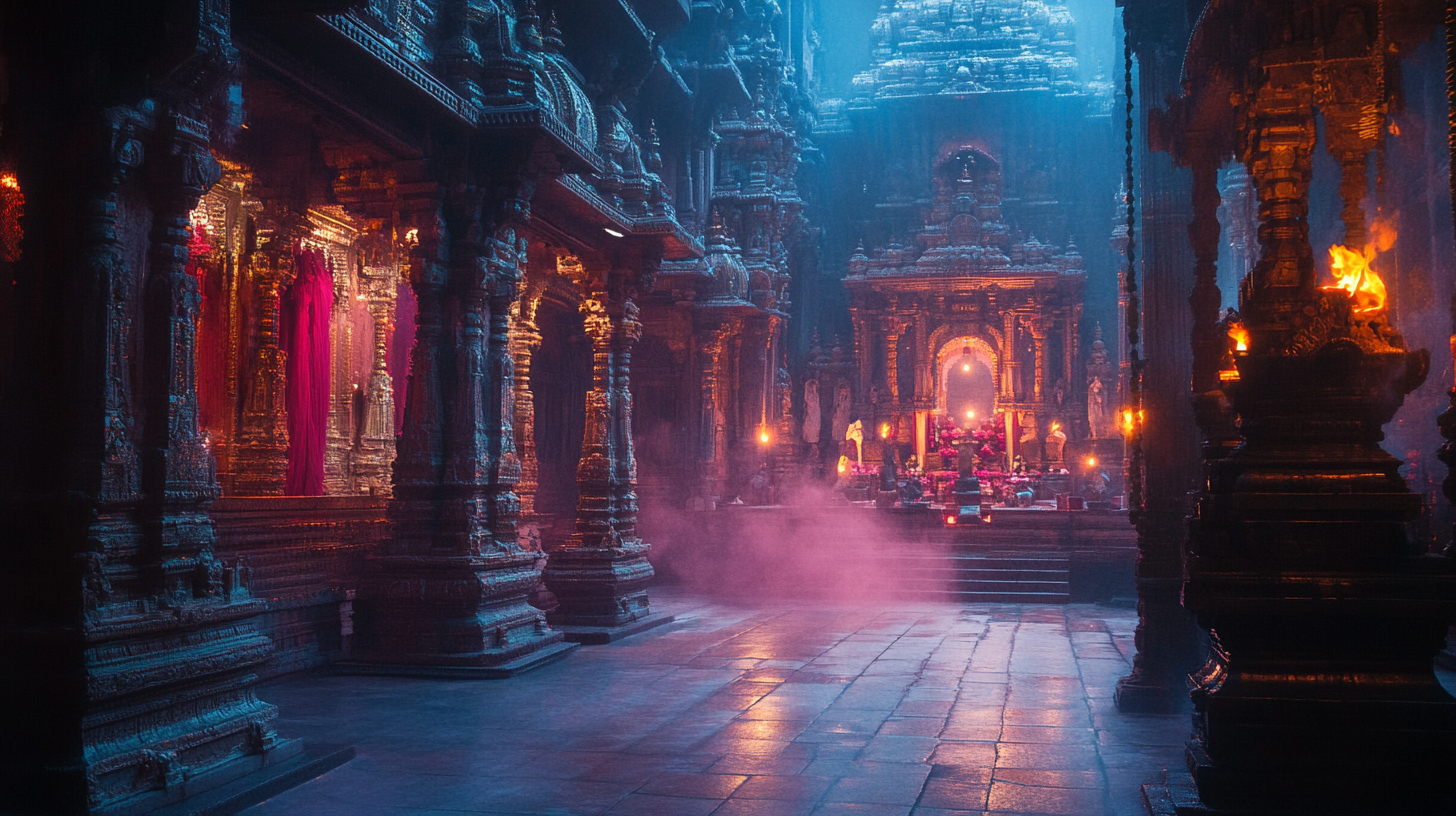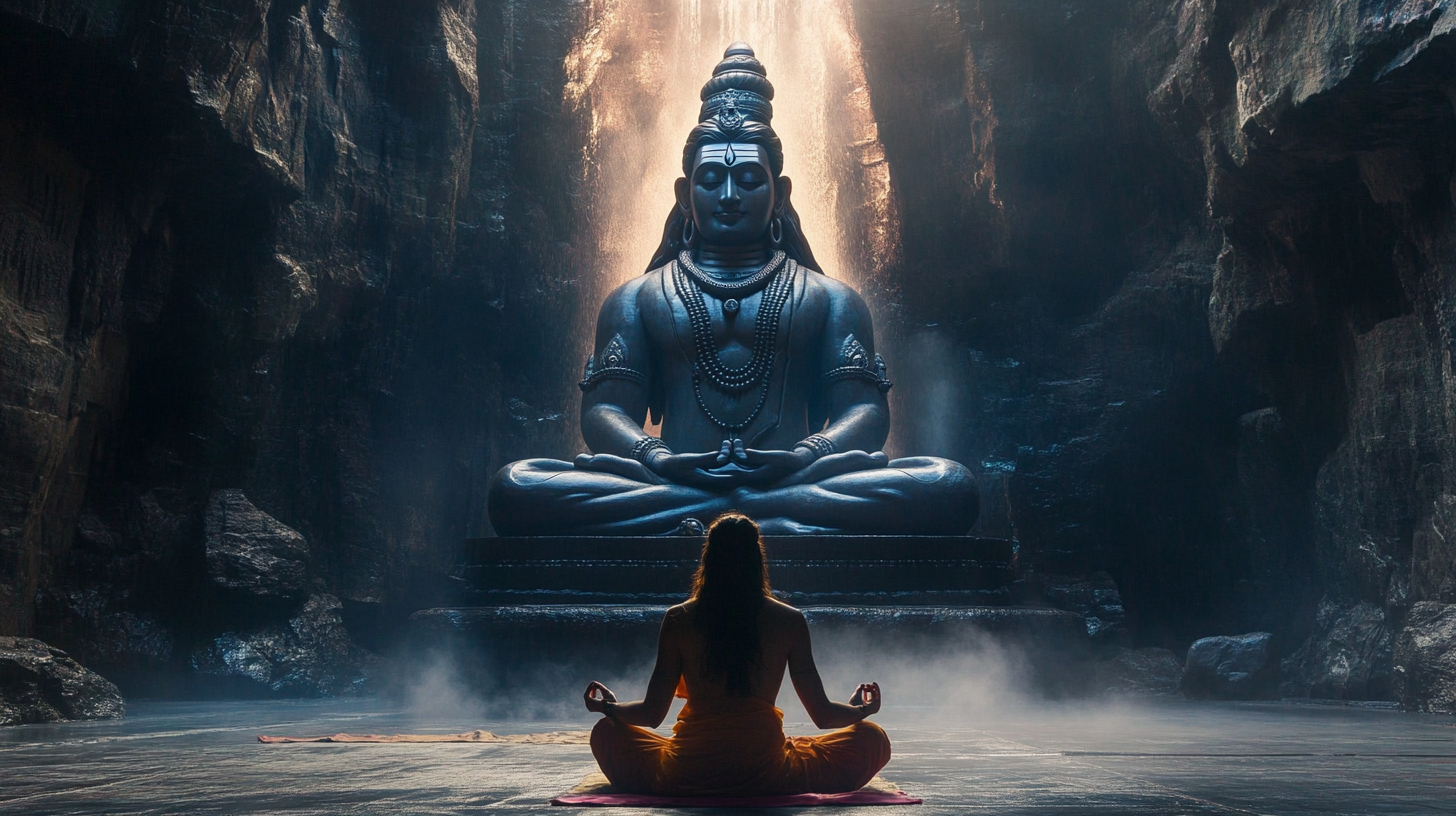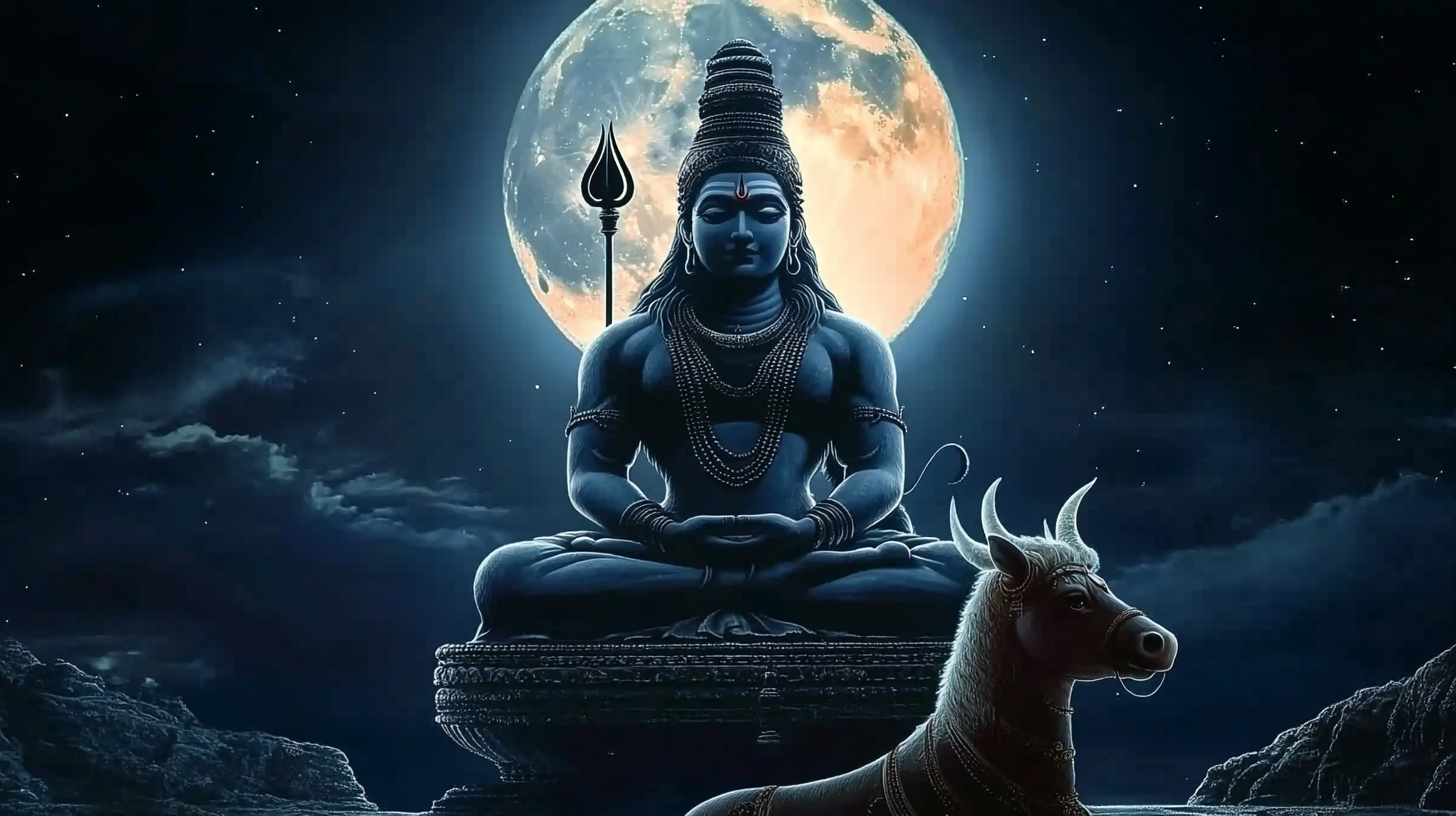How to observe and maximise the benefits of Mahashivaratri?
What are the things to do? How to do them? So many questions that we have the answers to, that will aid you towards experiencing the magic of Mahashivaratri
Moolah

Preparing for Mahashivaratri: A Complete Guide to Fasting, Meditation and Spiritual Readiness

As we approach the sacred night of Mahashivaratri on February 26, 2025, devotees worldwide are beginning their preparations for one of Hinduism's most significant observances. Whether you're a first-time observer or a seasoned practitioner, this guide will help you prepare meaningfully for the night dedicated to Lord Shiva.
Understanding the Mahashivaratri Fast
The Mahashivaratri fast isn't just about abstaining from food – it's a spiritual practice that purifies both body and mind. Unlike other Hindu fasts, this one spans an entire night, making preparation especially important.
What You Can Eat Before the Fast
The day before Mahashivaratri is crucial for preparing your body. Consider:
- A light, sattvic breakfast rich in fruits and nuts
- A moderate lunch focusing on easily digestible foods
- Avoiding heavy, spicy, or tamasic foods that might make fasting difficult
Foods and Practices to Avoid During Mahashivaratri

During this sacred period, certain items and practices should be avoided:
Food Restrictions
- All grains and cereals (including wheat, rice, and millets)
- Lentils and legumes
- Non-vegetarian food
- Onion and garlic
- Processed or packaged foods
- Table salt (rock salt is permitted)
- Cooking in iron utensils
Behavioral Practices to Avoid
- Negative thoughts and speech
- Anger and conflicts
- Excessive sleeping during the day before
- Using leather items during worship
- Consuming intoxicants
- Telling untruths
- Engaging in gossip or idle talk
Preparing Your Body and Mind
Physical Preparation (1 Week Before)
Start gradually adjusting your eating patterns a week in advance. Reduce heavy meals and increase your intake of:
- Fresh fruits and vegetables
- Light, nutritious soups
- Herbal teas
- Pure water

Mental and Spiritual Preparation
- Begin meditation practices focusing on Lord Shiva
- Reduce screen time and external distractions
- Practice early morning wake-ups to adjust your body clock
- Start chanting Om Namah Shivaya during daily activities
Essential Items to Gather
For Puja and Worship
- Fresh bilva (bael) leaves
- Pure ghee for diya
- White flowers
- Incense sticks
- Fresh fruits for offerings
- New clothing for temple visit

For Breaking the Fast
- Fresh fruits
- Dry fruits
- Pure milk
- Holy basil leaves
- Rock sugar (mishri)
Day-Before Checklist
- Clean and prepare your puja space
- Gather all puja materials
- Plan your four prahara timings
- Arrange comfortable seating for night-long worship
- Inform family members about your fasting schedule
- Keep light, sattvic snacks ready for emergency breaking of fast if needed
Special Considerations
For First-Time Observers
- Consider a partial fast if you're new to fasting
- Keep elderly family members or priests on call for guidance
- Stay hydrated with water sips when needed
- Have someone experienced nearby during the night vigil
Health Precautions
- Consult your doctor if you have medical conditions
- Keep necessary medications handy
- Ensure proper rest before the fast
- Plan breaks during the night vigil
The Four Praharas: Night-Long Worship

First Prahara (6:00 PM - 9:00 PM)
- Initial prayers and sankalpam (resolution)
- First ritual bath of the Shiva lingam
- Offering of fresh fruits and flowers
- Chanting of initial mantras
Second Prahara (9:00 PM - 12:00 AM)
- Main abhishekam with panchamrit
- Offering of bilva leaves
- Recitation of Rudra mantras
- Group bhajans and kirtans
Third Prahara (12:00 AM - 3:00 AM)
- The most auspicious period
- Special aartis and stotras
- Deep meditation and contemplation
- Offering of dhoop and flowers
Fourth Prahara (3:00 AM - 6:00 AM)
- Final abhishekam
- Concluding prayers
- Morning aarti
- Breaking of the fast
Meditation Guide for Mahashivaratri

Preparation for Meditation
- Sacred Space Setup
- Choose a quiet, clean space
- Face North or East
- Place a Shiva lingam or image if available
- Light a ghee lamp
- Use mild incense (preferably sandalwood)
- Body Preparation
- Wear comfortable, clean clothing
- Sit in a comfortable posture (preferably Padmasana or Ardha Padmasana)
- Keep your spine straight
- Place your hands in Dhyana mudra
The Meditation Process
This is by no means a 100% fool-proof guide to what meditation is and what it is supposed to be or feel like. But just a guide that could help anybody get into the practice of sitting still and doing conscious breath-work.
First Stage: Grounding (10 minutes)
- Begin with deep breathing
- Chant “Om” 3 times
- Focus on your base chakra (Muladhara)
- Visualize a deep red light at the base of your spine
Second Stage: Connection (15 minutes)
- Start chanting "Om Namah Shivaya"
- Either out loud or mentally
- Feel each syllable's vibration
- Synchronize with your breath
Third Stage: Deep Meditation (20-30 minutes)
- Visualize Lord Shiva in your heart center
- Focus on the third eye point
- Observe your thoughts without attachment
- Maintain awareness of your breath
Final Stage: Integration (5-10 minutes)
- Gradually reduce the intensity of focus
- Feel gratitude
- Offer your meditation to the divine
- Slowly open your eyes
Special Mahashivaratri Meditation Techniques

Shiva Lingam Meditation
- Focus on a Shiva Lingam
- Visualize it emanating pure light
- Feel the energy moving up your spine
- Experience the coolness of your breath
Third Eye Meditation
- Concentrate on the point between eyebrows
- Visualize a crescent moon with a dot
- Feel the expansion of consciousness
- Allow insights to arise naturally
Mantras for Meditation
- Basic Mantras
- Om Namah Shivaya
- Har Har Mahadev
- Om Tryambakam Yajamahe
- Advanced Mantras
- Maha Mrityunjaya Mantra
- Shiva Panchakshara Stotra
- Rudra Mantra

Tips for Deeper Meditation
- Start with shorter durations and gradually increase
- Use mala beads to keep track of mantras
- Maintain a steady rhythm in breathing
- Stay hydrated but avoid excessive water
- Take short breaks between sessions during the night
- Journal your experiences
- Join group meditations if possible
Signs of Progressive Meditation
- Feeling of lightness
- Enhanced clarity
- Emotional balance
- Spontaneous joy
- Increased energy
- Deeper sleep after the festival
- Reduced mental chatter
Closing Thoughts
Remember, preparation is key to a meaningful Mahashivaratri observance. While these guidelines help create a framework, your personal devotion and sincerity matter most. Approach the fast with joy and reverence, knowing you're participating in a tradition that has transformed countless lives over millennia.
